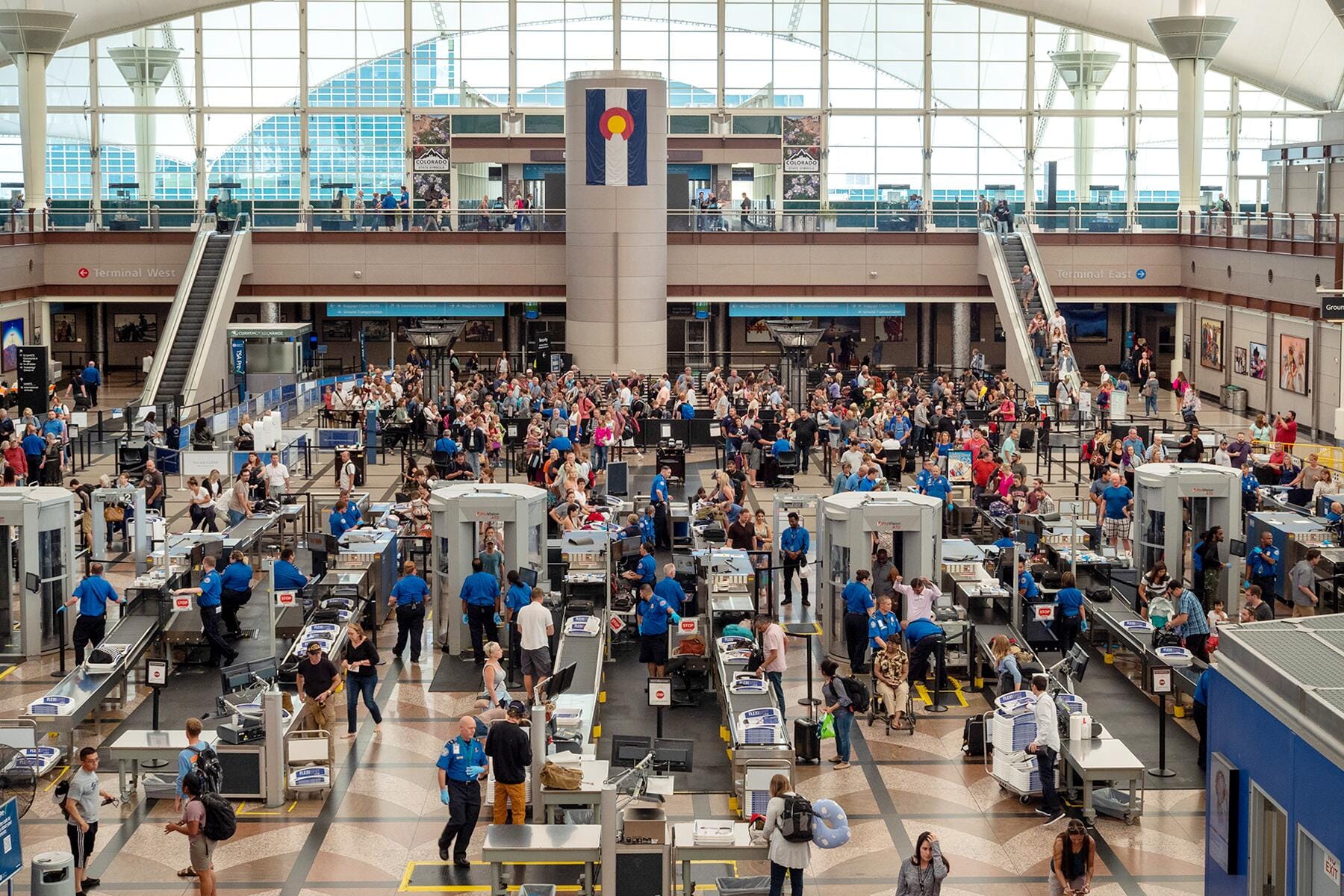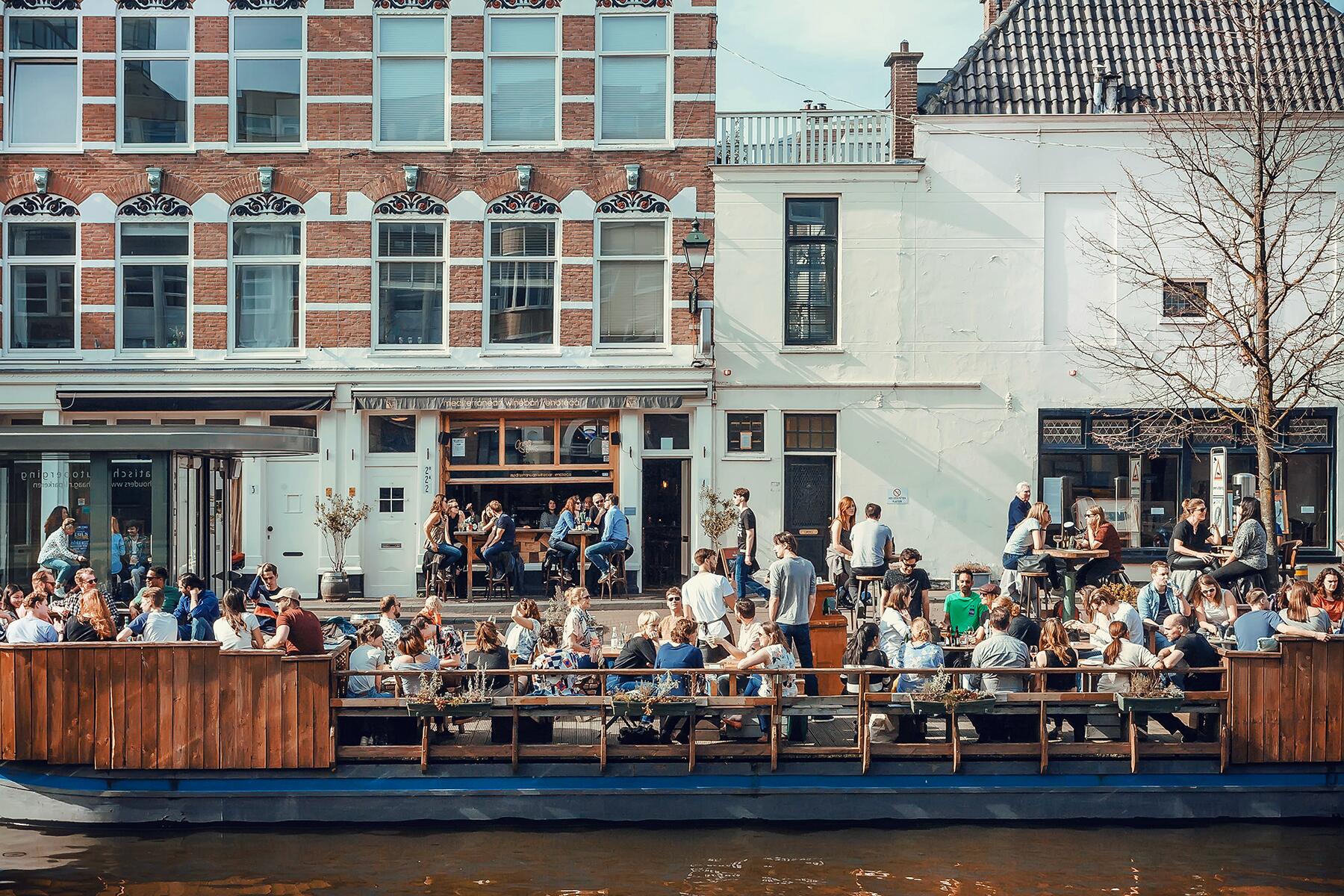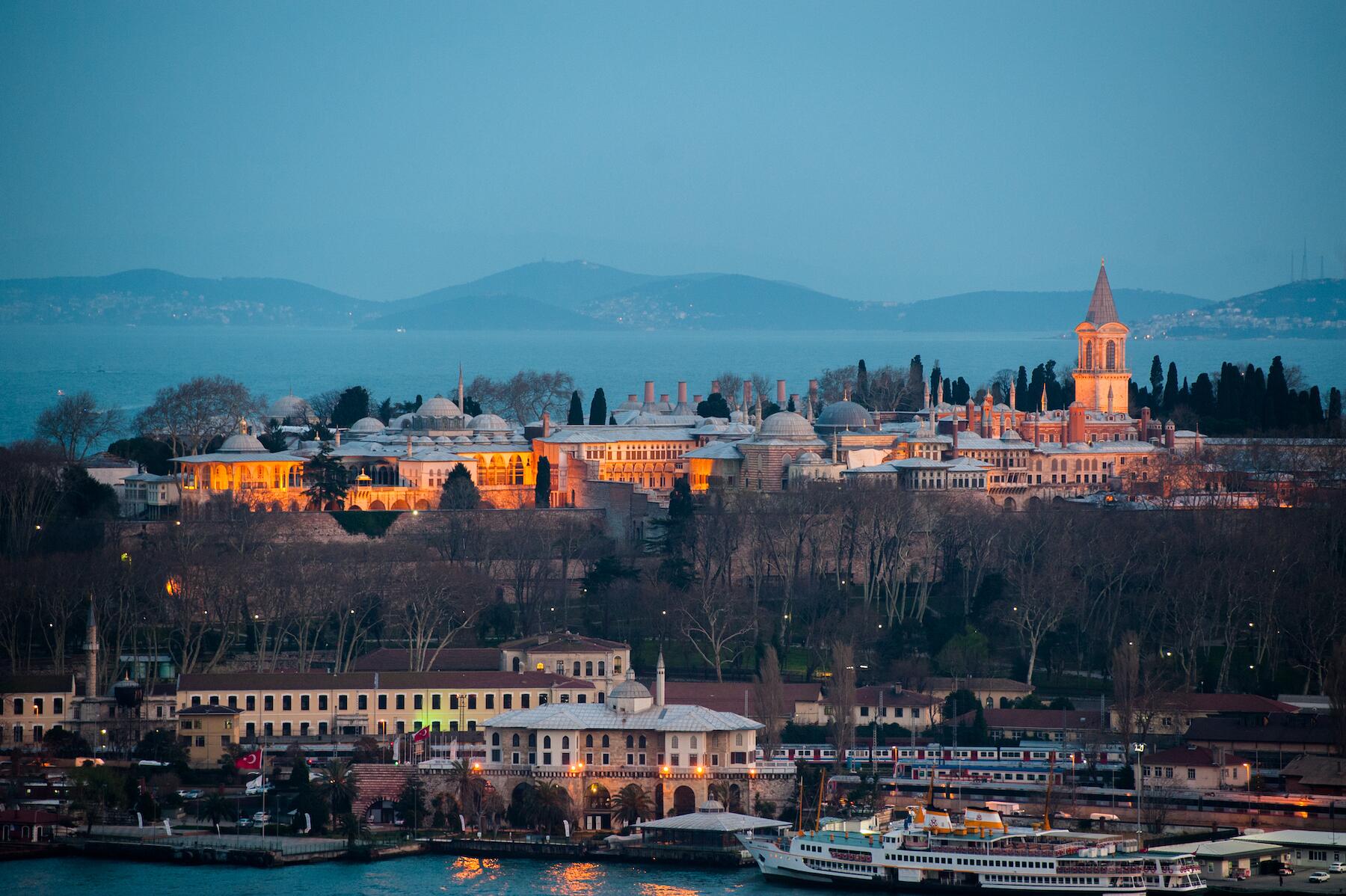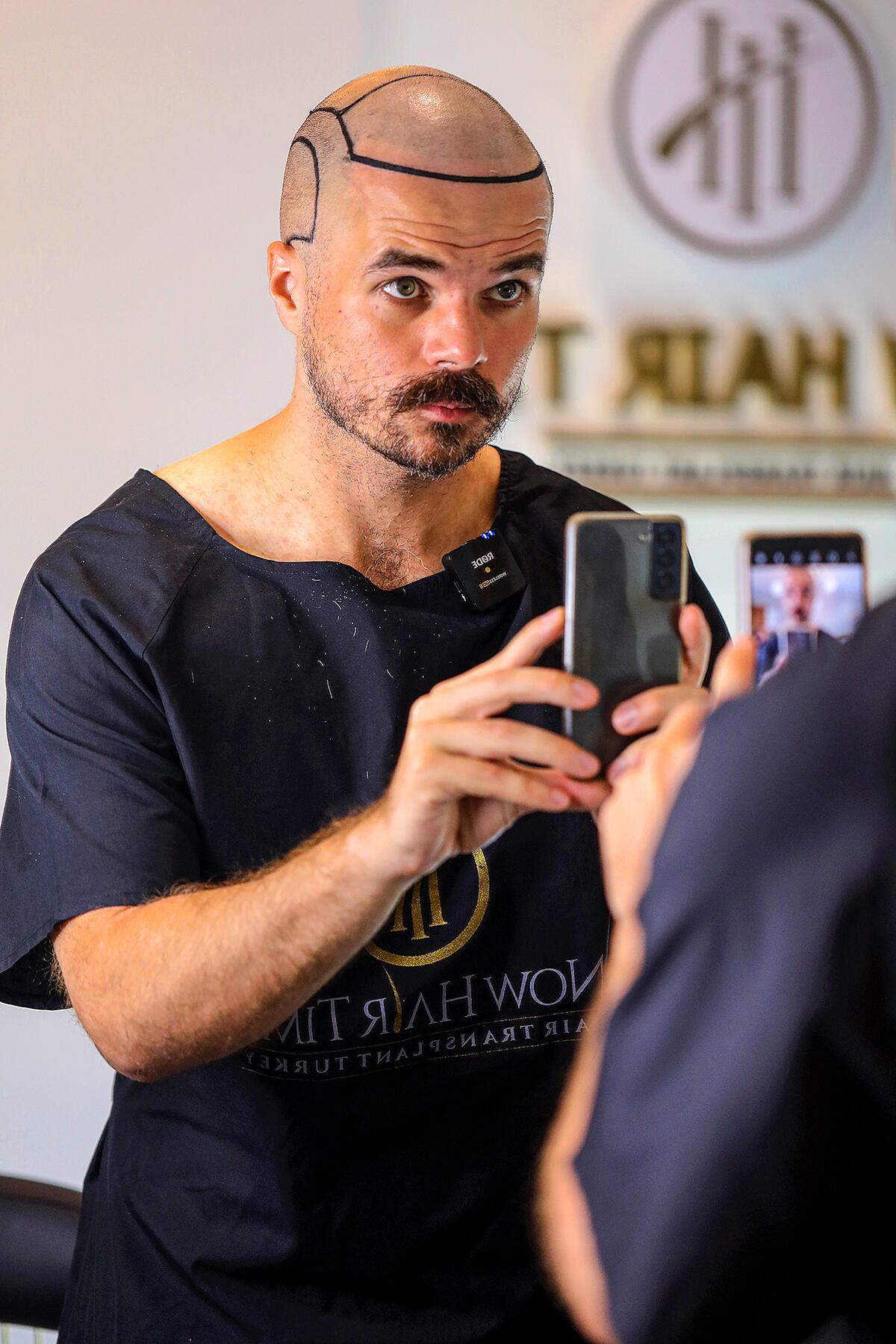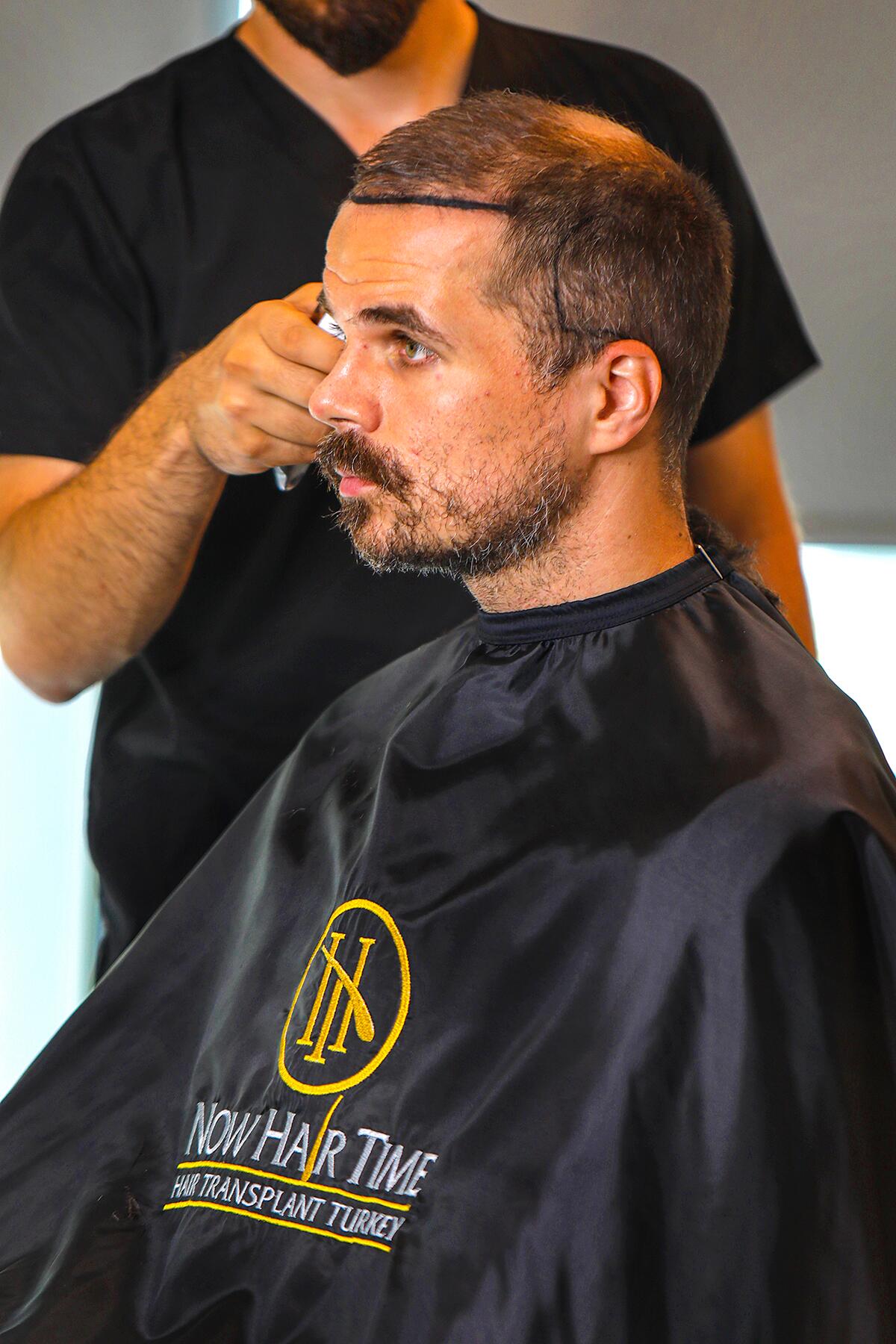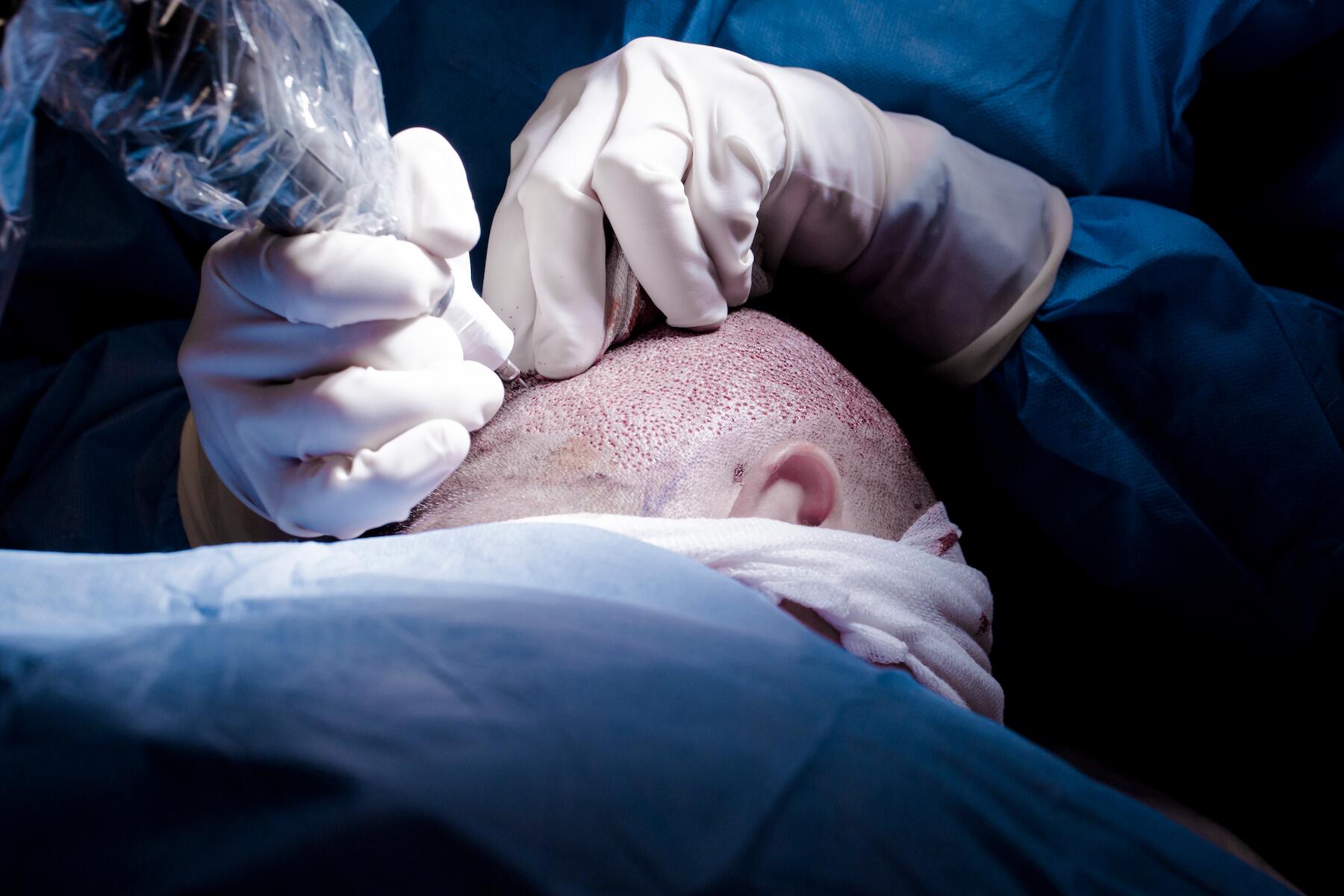Plastic surgery tourism is on the rise in Turkey—and hair transplants are a big thing.
I’m lying face down in Istanbul, and someone has just stuck a needle into the back of my head. Wincing in pain, I think about the dotted line drawn around my skull, the sterile scent of the room. A translator assures me this part will be over soon. I grit my teeth and try to settle in. Another needle, more wincing. I am a full continent away from home, strewn across a surgical chair because I want my hair back.
Istanbul has become one of the top destinations in the world for cosmetic tourism. It’s estimated that over a million visitors travel to Turkey each year for surgeries, contributing over $4 billion to the country’s economy. The main appeal is that the procedures come at a fraction of their comparative North American and European costs. At the forefront of this trend are hair transplants.
Exact figures aren’t known, but reporting in Slate estimates roughly 2,000 people a day undergo hair transplants in Istanbul. The treatment can cost anywhere from $500 to $10,000, but the quality of the transplants varies with the cost and clinic. Those thinking about making the trip should do extensive research. Limited regulations in the country can lead to unwanted results, including scarring and unnatural-looking hairlines. That said, thousands of customers each year return home happy with their new hairdos, so much so that Istanbul’s airport has been nicknamed “the hairport.”
Recommended Fodor’s Video
To entice potential clients, clinics offer packages, including plane tickets and high-end hotels. On social media, they post sizzle reels of their fancy accommodations, dramatic before-and-after transformations, and testimonials from happy customers. That’s how I stumbled across Now Hair Time, who hosted me as part of this article.
My Decision to Get a Hair Transplant
I began losing my hair in my late teens. Over the years, I have tried many techniques to combat or hide that loss. For a while, I wore a beanie regardless of the temperature. I experimented with specialty shampoos and organic tinctures. There was a period when I briefly considered a scalp tattoo. While I still had some hair, looking at my brother’s chrome top was like looking at the ghost of Christmas future. The hair was going to go, it was just a matter of when.
A few years back, I pulled the trigger on a fully shaved head. For an afternoon, I strut around feeling bold like late-era Bruce Willis. But the feeling was quickly trampled when a fashionable coworker remarked that I looked exactly like Uncle Fester of Addams Family fame. Demoralized, I started researching more permanent hair loss solutions.
Historically, hair transplants have had a bad reputation. Early techniques left jagged scars and less-than-convincing results. But advancements in hair transplant technology and better techniques from practitioners have changed the game. FUE is the treatment of choice for most people. The procedure takes follicles from healthy hair on the back of the head and puts them into the balding area. From there, the new hair will grow indefinitely, though any natural hair will continue to thin around it.
My decision to get a transplant happened over the course of the pandemic. Having to look at my forehead for hours at a time during zoom meetings made me more conscious of my hairline than I had ever been before. That, coupled with months spent alone in my apartment, lead to research and planning. If there was something I could do for myself to boost my confidence, and if I could do it while taking a trip overseas, I mean…why not?
What to Expect When Getting a Hair Transplant in Turkey
When I arrived in Istanbul, the folks from Now Hair Time picked me up from the airport in a decked-out van, complete with a white leather interior and flat-screen televisions. The clinic was also very chic, falling somewhere between an expensive spa and a luxury coffee shop. The presentation was reassuring. When people are performing surgery on your head, you want to make sure they don’t skimp on the details.
Through a translator, the team walked me through the procedure and potential risks of the transplant. There were long contracts to sign and all sorts of paperwork outlining what I’d need to do for optimal results. No gym time for the first-month post-transplant. Chlorinated pools and saunas were non-starters. I’d need to avoid direct summer sunlight between the hours of noon and 7 p.m., and if I was going to wear a hat, I needed to take it off every 30 minutes to let my head breathe.
In addition to the list of best practices, the clinic let me know that I should set realistic expectations. They’d be able to lower my natural hairline and support the hair I have left, but a single treatment wasn’t enough to cover my thinning areas and my crown. While my dreams of looking like Thor were thwarted, the info was a green flag. A major criticism of many Turkish hair transplants is that they tell clients what they’d like to hear rather than offering them the best solutions for their needs.
As we chatted through potential results, a man with a ruler came to measure my forehead. He began drawing with a charcoal pencil, making a line across my temple where the new hairline would be. Technicians and surgeons from around the clinic came to check and double-check the drawing, like mechanics looking under the hood of a car. As we shaved my head to get a better sense of the transplant area, it finally sunk in. This was actually happening.
A major question people have about hair transplants is whether the procedure hurts. The short answer is yes. But more than the pain, the process is just deeply uncomfortable. The local anesthetic was first delivered via needle. Each poke sort of felt like a staple gun. The experience lasted about 15 minutes in total, but it was the longest 15 minutes in recent memory. After the numbing, I was still extremely aware of the sensations happening to me. A fluid was inserted under the skin. I could hear each needle in the side of my head, the little squee of the liquid as burrowed inside. From there, the cultivation started: hundreds of uncomfortable little pricks, like plucking an errant nose hair over and over again. After the donor’s hair was taken, they used a diamond scalpel to make pin holes in my thinning area and inserted the transplants. This lasted for around six hours.
I was handled with great care by the Now Hair Time folks. The procedure was performed by two technicians and overseen by a surgeon, who, through a translator, checked in constantly. After the initial shock, I settled into discomfort. The majority of the procedure was spent staring out the hospital window at Istanbul’s hilly landscape and the beautiful architecture of the local area.
Expectations vs. Reality
My time in Istanbul was limited to four days. When planning the trip, I envisioned a lot of sightseeing on top of the hair transplant. What I had neglected to factor in is that hair transplants are surgery. While it isn’t as serious as getting a new kidney or fixing a heart valve, the procedure itself is exhausting. It also requires a lot of aftercare to maximize the best results. For the first three days post-surgery, you’re supposed to keep your head upright to prevent swelling. This means squatting to tie shoes and use the bathroom, even sleeping at a forty-five-degree angle. Excess sweating and sun exposure is to be avoided. Alcohol and Turkish coffee are off-limits. Those limitations don’t make for a particularly fun time, plus the fact that immediately after the surgery, folks look kind of like they had a lobotomy.
Most of my time in Turkey was spent in the hotel. I was grateful Now Hair Time’s package included lux accommodation. Anyone looking to see Istanbul properly during the trip should book a few days before their procedure.
As for the results? I’m optimistic. The before and after photos on the clinic’s Instagram are all very promising. My new hairline looks great, even as things are still filling in. I’m told that real changes will take up to six months to see.
The whole process—especially when you consider the travel—is a far more intense experience than I had initially accounted for. Still, for those thinking about a hair transplant but worried about the potential costs of the trip to Istanbul, it seems worth it in the bigger picture. It’s all a matter of doing the research and finding a reputable clinic. Instanbul might just give you back your hair.

